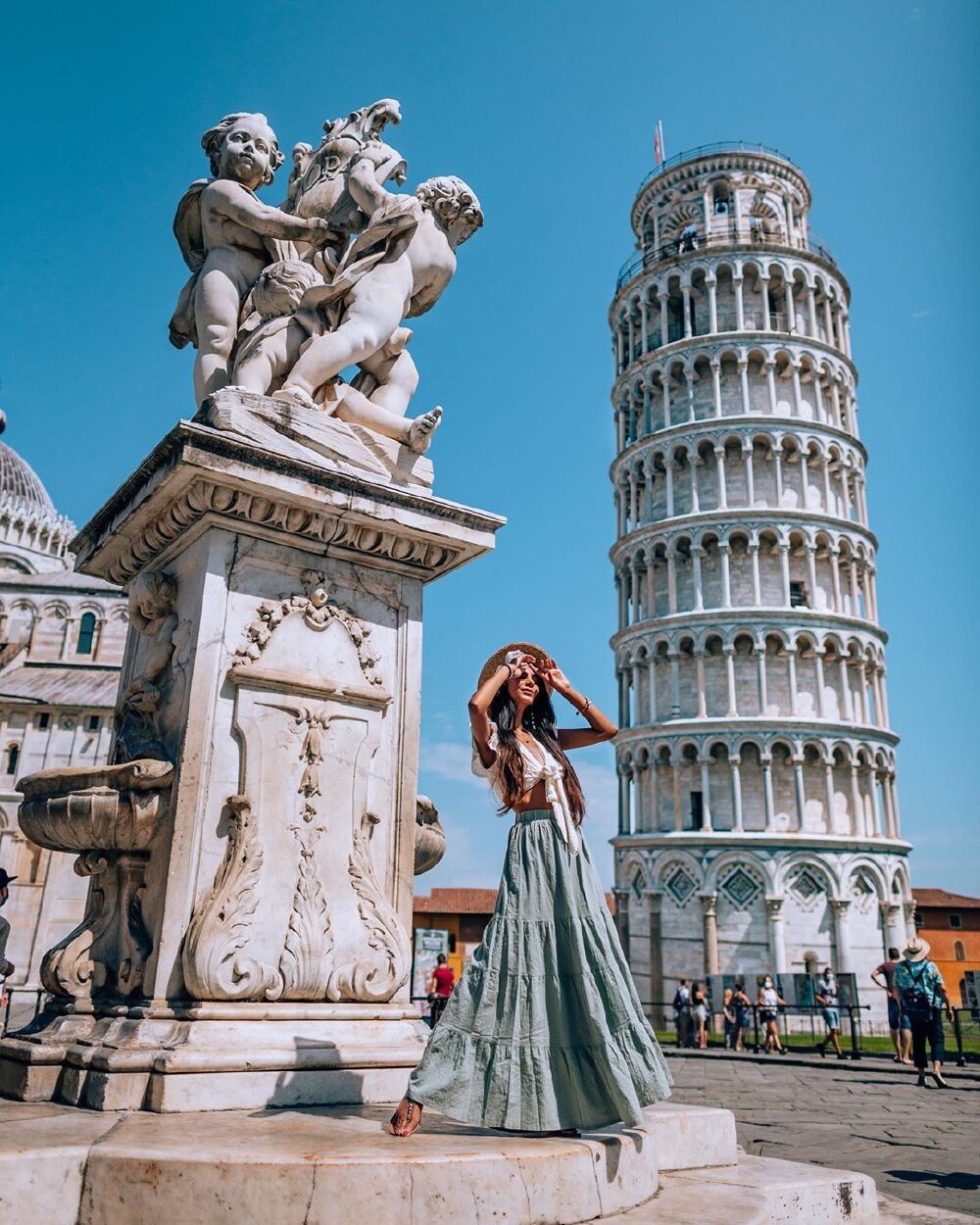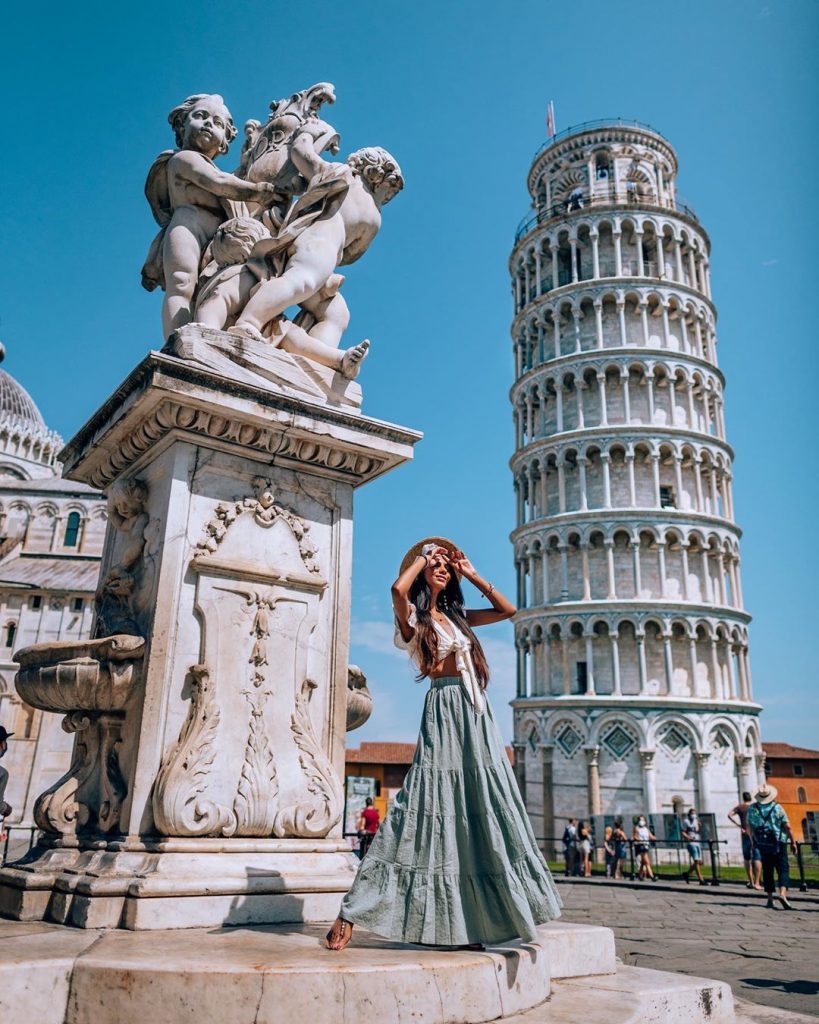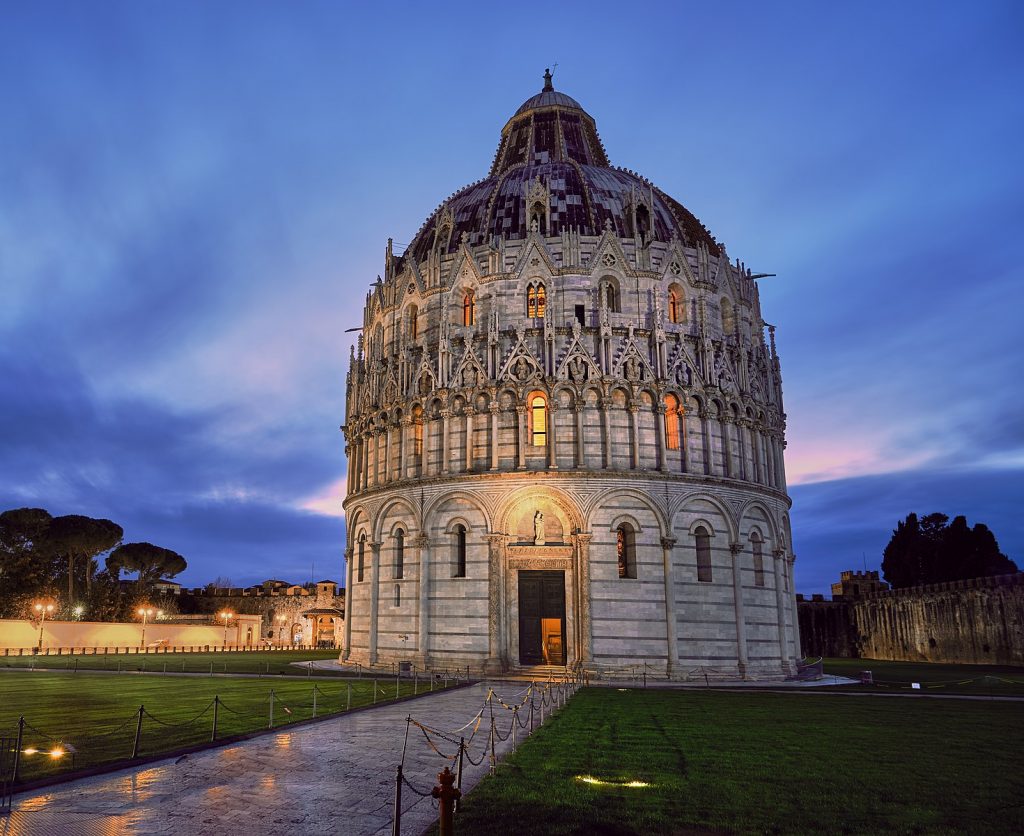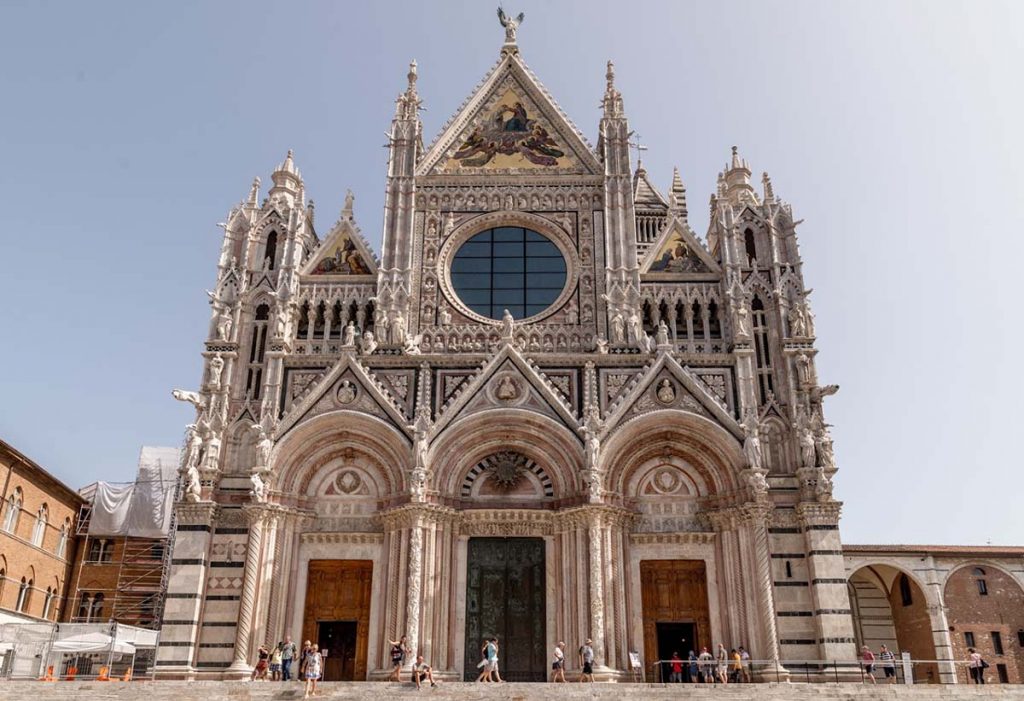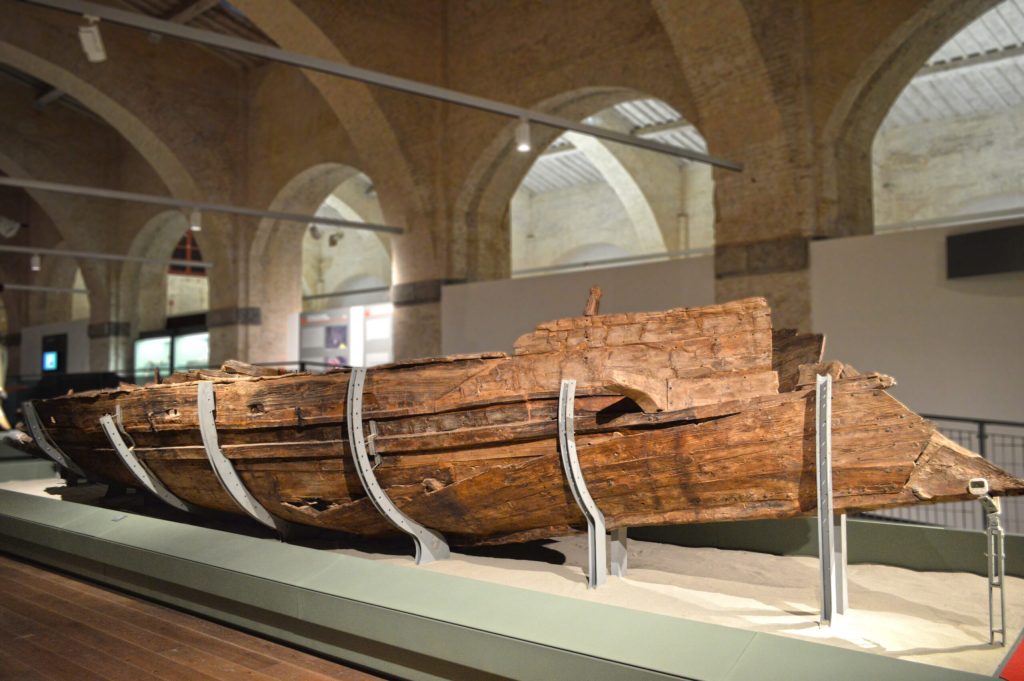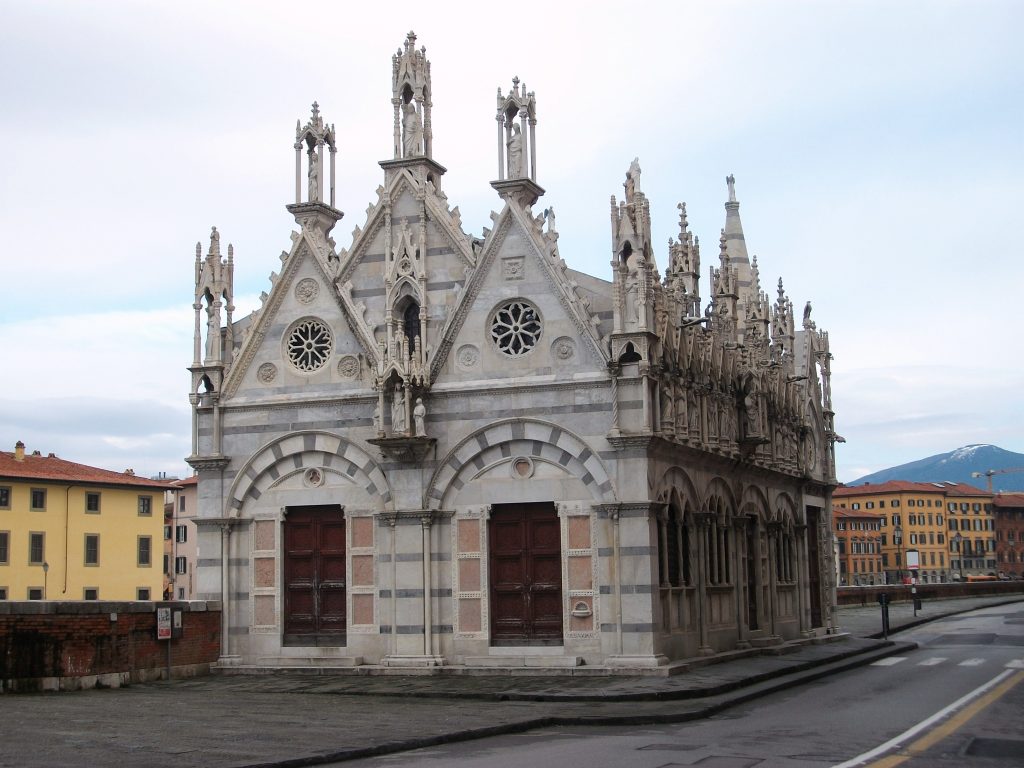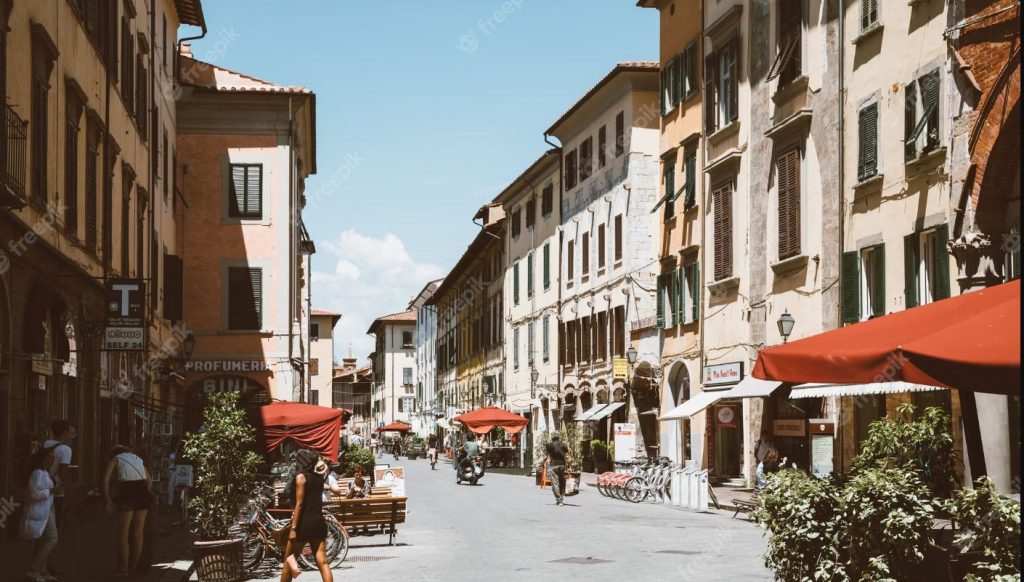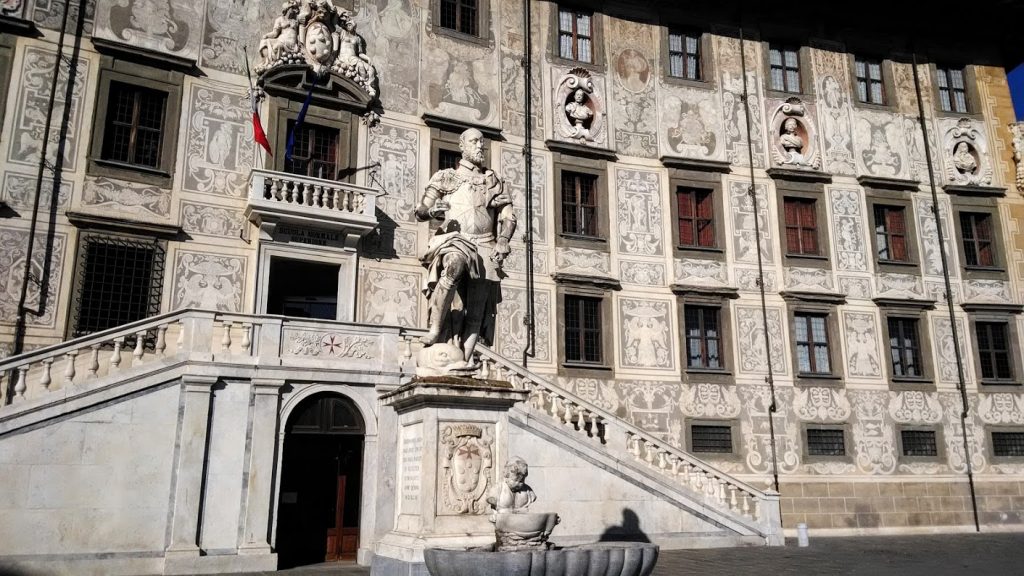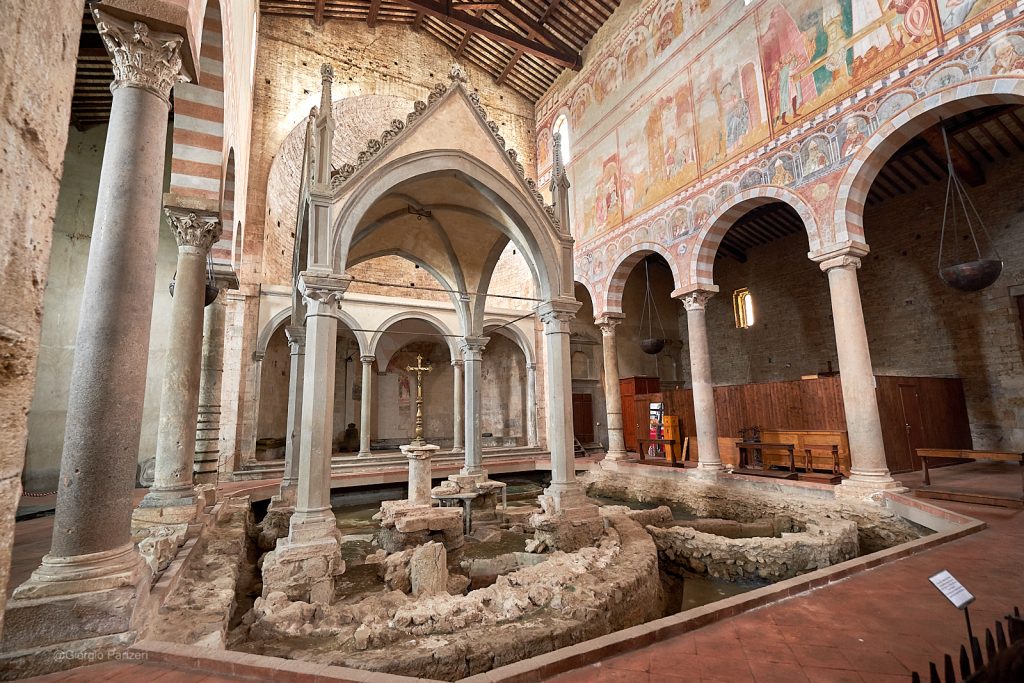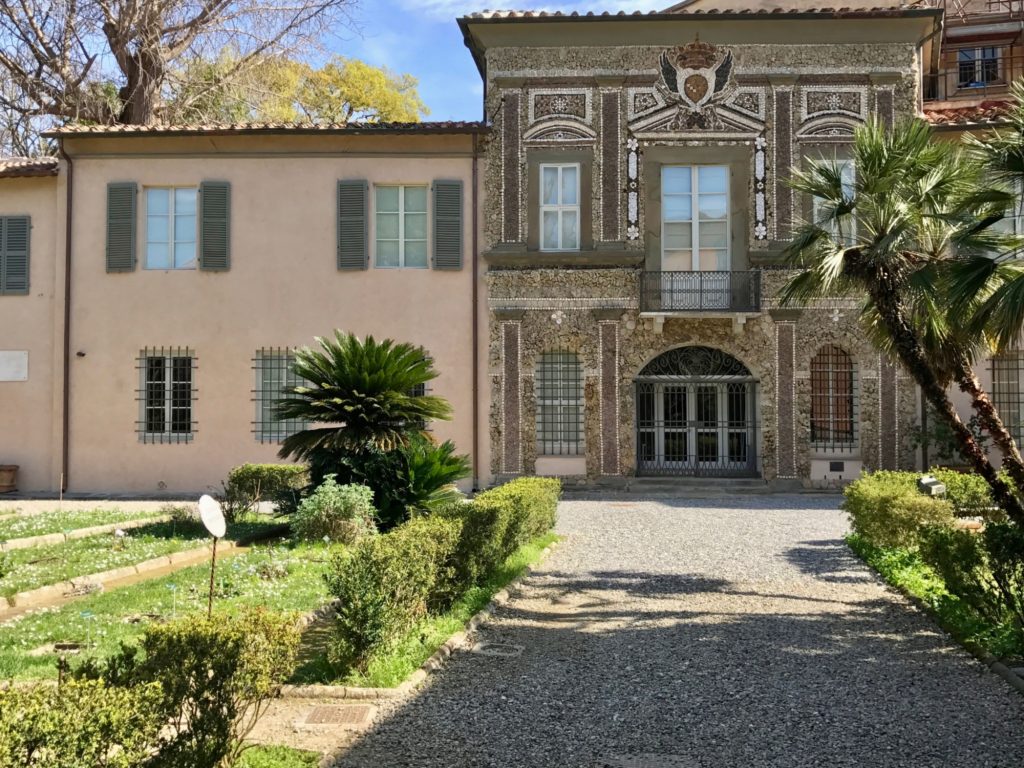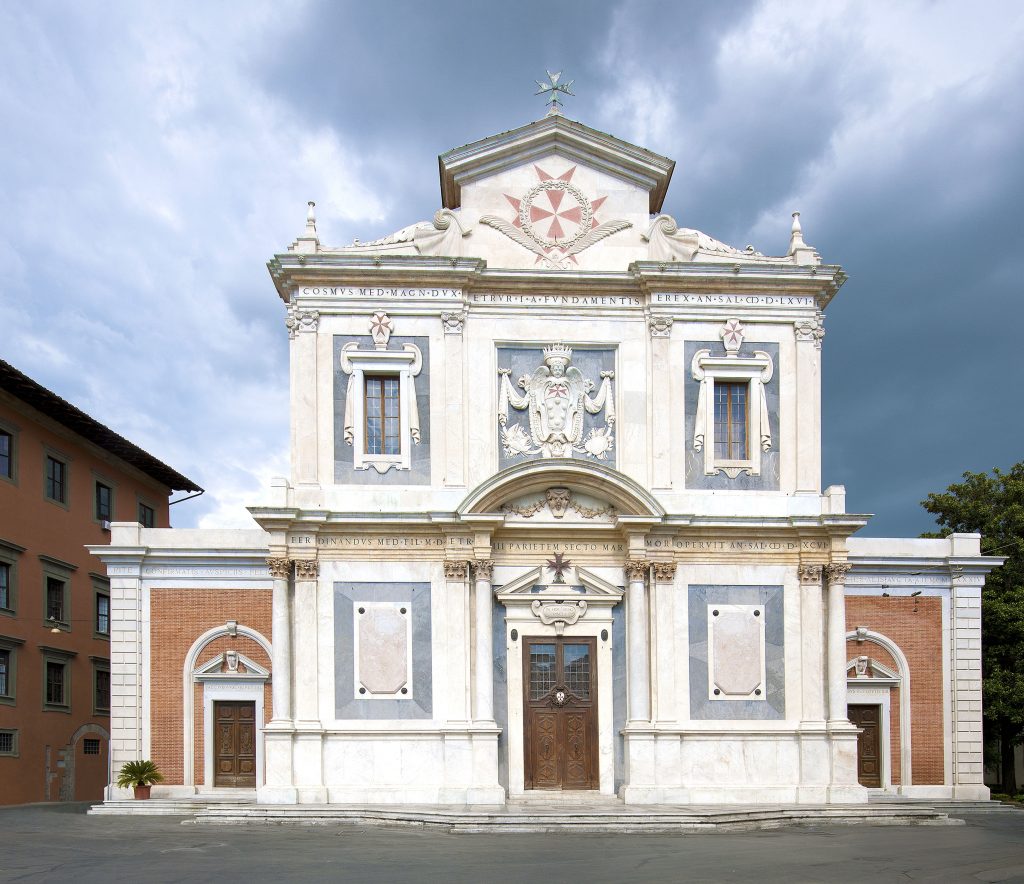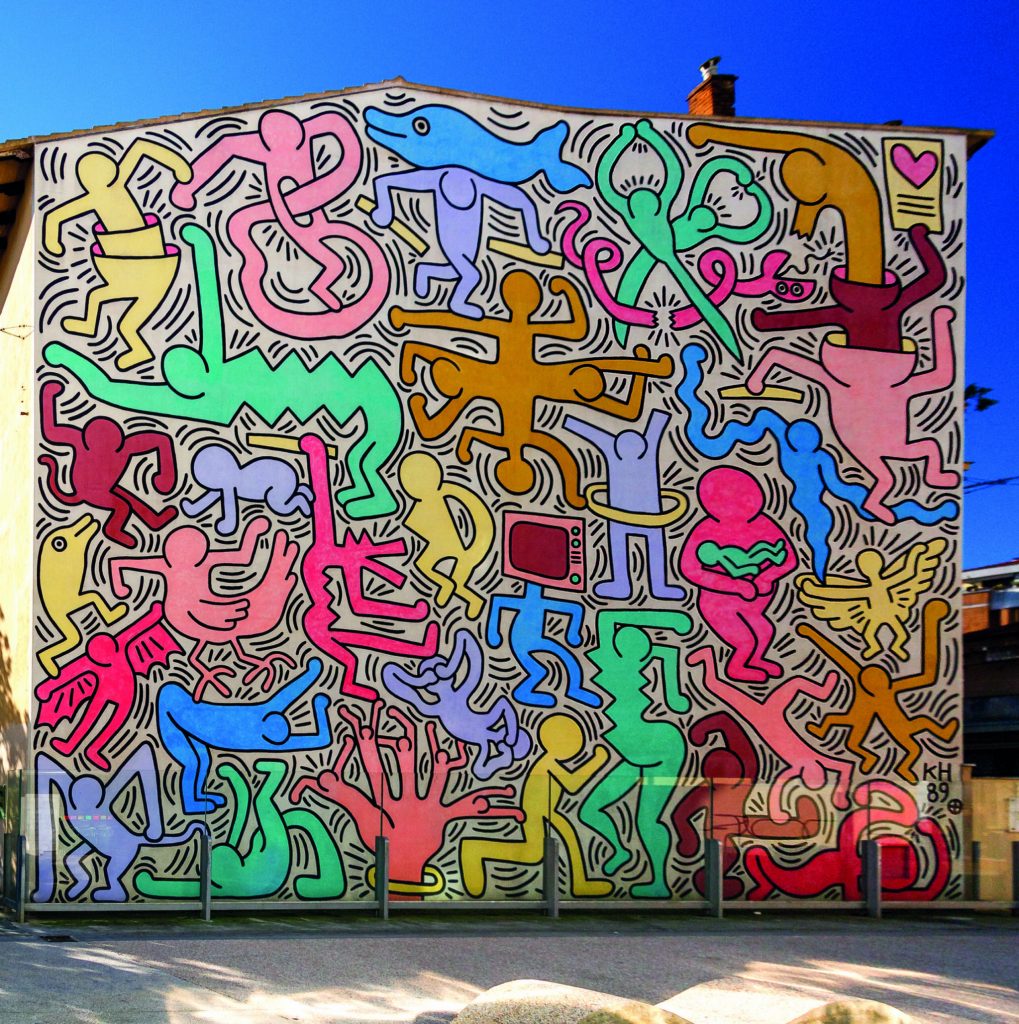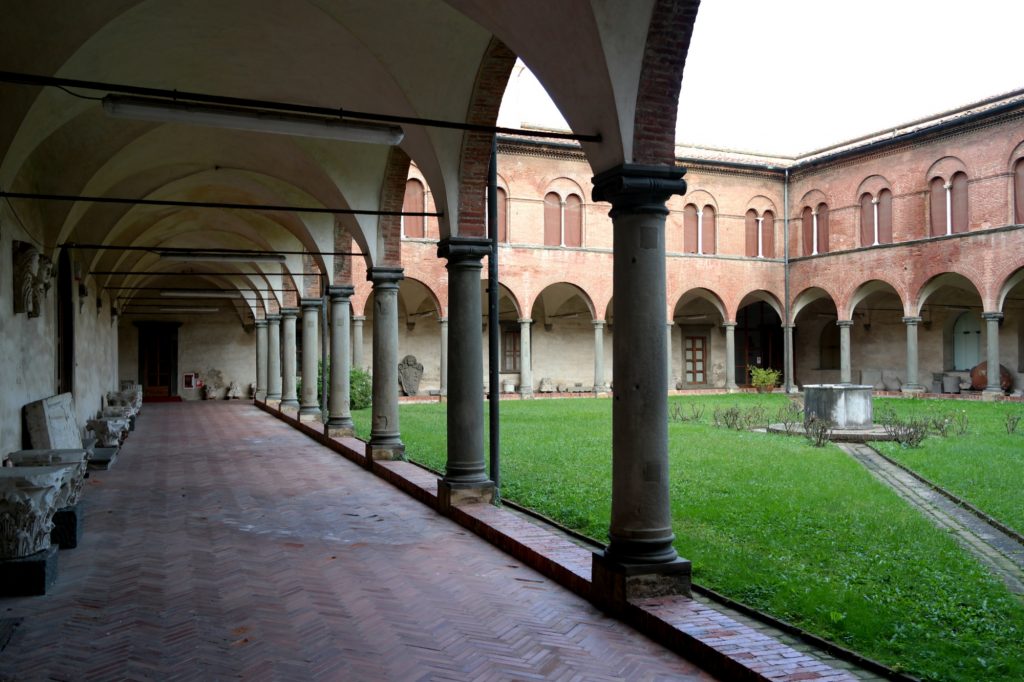Pisa is a city that should be on everyone’s travel bucket list. Home to one of the most iconic attractions in the world, the Leaning Tower of Pisa, Pisa is a beautiful city full of culture and history. This charming Italian city is home to many other beautiful attractions and things to do, making it the perfect destination for a romantic weekend getaway or a family holiday.
In this blog post, we will look at the top 15 best tourist attractions and things to do in Pisa.
✅ Make sure you’ll see the entire collection in Framey App, including addresses, opening hours, and contact information!
1) The Leaning Tower of Pisa – Bucket List for Pisa
The Leaning Tower of Pisa, also known as La Torre Pendente, is undoubtedly the world’s most famous tower and a must-see attraction for any visitor to Pisa. Even a child has heard of it! Standing next to the Cathedral, the tower has an unmistakable lean, thanks to its unstable foundations.
Until 1990, tourists were allowed to climb the spiral staircase of 294 steps to the top platform, but the increasing tilt angle meant that it would topple by 2000. To prevent this from happening, the tower was closed in 1990 to allow an expensive restoration program.
When it reopened in 2001, the tilt had been modified to about 3.99 degrees, leaving the top out of line by 3.9 meters. The tower still has a slight curve, resulting from attempts by various architects to correct its tilt during construction.
If you want to climb to the top, you can buy tickets for 18 euros, which also includes free entrance to the Cathedral. During peak season, it is recommended that you pre-book your climb up to the top as there will be thousands of other visitors at the same time.
Opening Hours:
November and February → The Tower of Pisa is open from 09,45 -17, 15
On November 1st, it is open from 9,00-18,00
December and January: the Tower is open 10,00 – 17,00
From December 5-8, it is open 09,00 – 18,30
From December 21st to January 6th, it is open 10,00 – 19,00
In March → the Tower of Pisa has the following timetable:
Until March 23rd, open 09,00 -18, 00
From March 23rd-29th, open between 09,00-19,00
From March 30th, the tower is open 08:30-20:00
April to September → The Tower has the following timetable:
The Leaning Tower is open from 09,00 – 20,00
Between June 17th and August 31st, the Tower of Pisa is open from 08,30 – 22,00.
On June 16th, the tower is open from 08,30 – 17,30
October → The Tower of Pisa is open between 09,00 – 19,00 (with some variations at the start and end of the month that overlap with September/November hours)
Age restriction:
To climb the tower one has to be a minimum of 8 years old due to safety reasons. The price is the same for kids as adults.
Don’t miss the chance to take a photo with this iconic tower in the background and add this unforgettable experience to your bucket list!
2) Baptistery
One of the must-visit sites in Pisa is the Baptistery, a free-standing building located west of the cathedral. It was built in 1153, almost a hundred years after the cathedral, during the city’s prime. The design of the Baptistery follows that of the cathedral, with the use of the same building material and patterned with different colors of stone, as well as the blind arcading and dwarf galleries.
Over time, the Baptistery transitioned from Romanesque to Gothic, with the lower and upper levels showcasing this development. In 1260, Nicola Pisano took over the project, and his son Giovanni followed in 1285-93. The conical dome stands on four pillars and eight columns, creating an atmosphere of light and solemnity.
Like the cathedral, the highlight of the Baptistery is the free-standing marble pulpit, a 1260 masterpiece by Nicola Pisano and one of the great masterworks of Romanesque sculpture. It features relief panels depicting scenes from the New Testament with incredible artistic intensity.
Aside from the pulpit, don’t miss the font by Guido da Como (1246) and the figures of saints created by students of Nicola and Giovanni Pisano. Visiting the Baptistery is an unforgettable experience that immerses you in the rich cultural and artistic heritage of Pisa.
3) Cathedral of Santa Maria Assunta – Bucket List for Pisa
The Cathedral of Santa Maria Assunta is an exceptional example of the Pisan architectural style. Designed by Pisan architect Buscheto, this five-aisled Romanesque basilica of white marble was begun in 1063 after Pisa’s naval victory over the Saracens. It was consecrated in 1118, though it remained unfinished until a new west front was added, and the main apse was completed towards the end of the 12th century.
The Cathedral’s pulpit, created by Giovanni Pisano between 1302 and 1311, is a true masterpiece. Giovanni’s pulpit showcases his unique style and rounded forms, departing from the severe style of his father Nicola, whose angular pulpit is located in the Baptistery.
The pulpit is supported by columns with shorter ones resting on lions, and figures of the Archangel Michael, Hercules, and Christ with the Four Evangelists around the base. Additionally, relief panels around the pulpit show New Testament scenes.
This Cathedral is one of the must-see tourist attractions in Pisa. Its unique architecture and stunning pulpit are worth visiting.
4) Museo dell’Opera del Duomo (Cathedral Museum)
Located on the Campo dei Miracoli, the Museo dell’Opera del Duomo (Cathedral Museum) is a hidden gem in Pisa that is often overlooked by visitors. However, this museum is one of the best-designed and curated museums in Tuscany, and it is worth a visit if you want to gain a deeper understanding of the art and craftsmanship of the era.
The museum houses the considerable treasury of the cathedral, which includes priceless masterworks of silversmiths, rich embroideries, tombs, sculptures, and paintings. Many of the sculptures on display were once decorations on various buildings of the complex but were brought indoors for protection many years ago to protect them from modern atmospheric pollution.
There are many treasures to admire in the museum, but be sure not to miss some of the highlights. The bronze griffin, wooden crucifix by Borgognone, Citharoedus David, Limoges caskets, and works of Giovanni Pisano, most notably his Madonnas, are must-sees. Also, make sure to see the exquisite small ivory statue and the crucifix known as the Crocifisso d’Elci.
The Museo dell’Opera del Duomo is open every day of the week, from Monday to Sunday, from 09:00 to 19:45.
Don’t forget to add this amazing museum to your Pisa bucket list to appreciate the city’s rich history and culture fully.
5) Campo Santo (Sacred Field) – Bucket List for Pisa
Campo Santo, or the Sacred Field, is a unique cemetery that holds significant importance in the history of Pisa. The story behind the construction of this cloister is fascinating as it was built to hold the sacred soil brought by Archbishop Ubaldo dei Lanfranchi from Golgotha, after returning from the Fourth Crusade.
The cloister is large and rectangular, with a gallery of arches that are beautifully decorated with Gothic tracery that opens into a charming courtyard. The floor of the cloister houses the graves of Pisan patricians, while Roman sarcophagi are placed around the sides, giving visitors an insight into the ancient Roman culture.
One of the most remarkable features of the Camposanto is the 14th- and 15th-century frescoes that used to adorn the walls. Unfortunately, a fire caused by artillery bombardment in 1944 destroyed or badly damaged these paintings. However, this tragedy also led to the uncovering of the original artists’ sketches in red pigment on the walls underneath.
These sketches, known as sinópie, were the artists’ most significant contribution to a fresco as they specified every detail of the composition. The actual painting of the fresco was often left to students and assistants. This sinópie is now displayed, along with reproductions of the corresponding frescoes, in the Museo delle Sinópie.
Visitors to Campo Santo will be amazed by the tranquil and peaceful atmosphere that surrounds them. The beauty and charm of the place will leave them mesmerized. It is an excellent destination for anyone interested in art, history, and culture.
A visit to this extraordinary cemetery is sure to be a unique and unforgettable experience for anyone traveling to Pisa.
6) Arsenals & Museum of Ancient Ships
The Arsenals in Pisa built between 1548 and 1588, played a crucial role in the city’s maritime history. Grand Duke Cosimo I de Medici had them constructed to strengthen Pisa’s naval power and restore its Maritime Republic’s past glory. The vast arcaded sheds were used to build impressive 50-meter-long galleys, warships that were launched directly into the Arno River.
The Arsenals were built inside the Cittadella, which dates back to 1160 but now only the San’Agnese tower remains intact. The Guelfa Tower, which offers panoramic views of Pisa and the Arno, was erected in the early 1400s and later rebuilt after damage sustained during World War II.
Following its use as artillery barracks from 1543, the Cittadella was converted into stables for the Dragon knights, who guarded Pisa against Barbary pirates. Today, the arsenals have become the home of the Museum of Ancient Ships, displaying outstanding finds from excavations carried out in 1998.
The museum houses an exceptional collection of ancient boats and marine artifacts that bear witness to Pisa’s rich maritime history. Among the displays, you’ll find three fully reconstructed ships that are over 2,000 years old, providing a fascinating insight into the nautical world of ancient Rome.
Located at Lungarno Ranieri Simonelli 16, the Arsenals & Museum of Ancient Ships are a must-visit for anyone interested in history, maritime technology, or simply curious about Pisa’s remarkable past.
7) Santa Maria della Spina – Bucket List for Pisa
One of Pisa’s most beautiful and well-known smaller churches, the Church of Santa Maria della Spina is located on the left bank of the Arno. Originally, it was a small oratory built right on the river, but severe foundation damage led to its reconstruction in 1871, stone by stone, on higher ground.
This Gothic-style church is richly decorated and gets its name from possessing a thorn (spina) from Christ’s crown of thorns, which was brought to Pisa from the Holy Land. The west front has two doorways and three distinctive gables, each with a small rose window. On the south side, a series of arches enclose doorways and windows, with a niche displaying figures of Christ and the Apostles above.
The building is topped by tabernacles containing statues, some of which have been replaced by replicas while the originals are on display in the Museo Nazionale. Inside the church, the Madonna del Latte is a replica, while the original is kept in the museum.
For sure, The Church of Santa Maria della Spina is worth a visit on any trip to Pisa.
8) Stroll along Borgo Stretto
One of the best things to do in Pisa is to take a stroll along Borgo Stretto. This narrow, atmospheric street is located between the rail station and the Piazza dei Miracoli. You’ll be transported back in time as you walk down Borgo Stretto, with buildings from the 14th and 15th centuries lining the street.
One of the unique features of Borgo Stretto is its arcades, which shelter the sides of the street from the sun and rain.
Despite being a popular tourist attraction, Borgo Stretto remains a favorite spot for Pisans to shop and stroll. You’ll find the street bustling with activity, adding to the vibrant atmosphere.
As you walk down Borgo Stretto, be sure to keep an eye out for Casa Bocca. Located at the corner of Borgo Stretto and via Mercanti, this is the house where Galileo was born. It’s a great spot to stop and snap a photo or simply appreciate the historical significance of the area.
If you’re looking for a more relaxed activity in Pisa, strolling along Borgo Stretto is a great option.
9) Palazzo dei Cavalieri – Bucket List for Pisa
If you want to admire the grandeur and elegance of Pisa, the Palazzo dei Cavalieri is a must-visit attraction. This palace, also known as Palazzo della Carovana, is located in the Piazza dei Cavalieri, which translates to Knights’ Square.
Built in 1562, architect Giorgio Vasari began rebuilding and enlarging it, creating the magnificent Palazzo dei Cavalieri, named after the training courses for knights (Cavalieri) of the Order of St. Stephen, which were held here. The Palazzo dei Cavalieri is one of the most imposing and ornate buildings outside of the Piazza dei Miracoli. Its facade is decorated with sgraffito ornament, coats of arms, and busts of six Medici Grand Dukes of Tuscany, from Cosimo I to Cosimo III.
One of the most impressive features of the Palazzo dei Cavalieri is its projecting roof and handsome double staircase leading up to the entrance. This grandeur creates a sense of awe for visitors who are eager to explore the beautiful interior of the palace.
Since 1810, the Palazzo dei Cavalieri has housed the Scuola Normale Superiore, an elite college of higher education founded by Napoleon. The prestigious institution offers higher education in various fields, and its presence in the palace adds to its historical and cultural significance.
In front of the Palazzo dei Cavalieri is a statue of Cosimo I by Piero Francavilla. On the north side of the piazza is the Palazzo dell’Orológio, built-in 1607 for the Order of St. Stephen and incorporating the remains of two early medieval tower houses.
If you’re in Pisa, make sure to add Palazzo dei Cavalieri to your itinerary. It’s a fascinating historical landmark that will leave you breathless!
10) Palazzo Blu
Palazzo Blu, also known as Palazzo Giuli Rossellini Gualandi, is a magnificent building that is home to an impressive collection of artwork and other historical items. This stunning structure showcases permanent collections of paintings from the 16th to the 20th century and also boasts an exquisite display of fine furniture and early coins.
However, the wonders of Palazzo Blu do not end here. The palace hosts a range of exciting special exhibitions that cater to diverse interests. These exhibitions may feature scientific topics or even cinema-related subjects. Additionally, Palazzo Blu also regularly features the works of esteemed artists such as M.C. Escher and the Italian modernist Amedeo Modigliani, who hails from the local area.
A visit to Palazzo Blu is a must for art lovers and history buffs alike. The intricate detailing of the palace’s architecture is a sight to behold, while the treasure trove of art and artifacts is truly remarkable. Located at Lungarno Gambacorti 9, Pisa, Palazzo Blu is conveniently accessible and well worth the visit.
11) Basilica Romanica di San Piero a Grado – Bucket List for Pisa
For those interested in history and architecture, the Basilica Romanica di San Piero a Grado is a must-see attraction in Pisa. This 10th-century basilica is located on the road to the marina, away from the city center. It was built on the spot where St. Peter is believed to have landed in Italy in 44 AD. Although the Mediterranean no longer reaches this far inland, 2,000 years ago, this was the old port of Pisa.
The church was constructed and modified over two centuries, resulting in an interesting blend of architectural styles. Its interior is lined with frescoes that are still vibrant, providing a glimpse into the past. If you visit the back of the church, you can see excavations that reveal the foundations of an earlier Paleo-Christian church and even earlier Roman buildings. It’s fascinating to see the layers of history that are buried beneath this ancient basilica.
Whether you’re a history buff, an art lover, or simply looking for something unique to see in Pisa, the Basilica Romanica di San Piero a Grado is worth a visit.
The address is Via Livornese, Pisa, so make sure to include it in your itinerary.
12) Orto Botanico (Botanic Garden)
The Orto Botanico, also known as the Orto Botanico dell’Università di Pisa, is one of the most serene and peaceful places to visit in Pisa. Firstly, established in the mid-1500s by Cosimo I de Medici, this botanical garden was the first university botanical garden in Europe. The garden features various environments and collections, including herb gardens, water gardens, an arboretum of rare trees, and greenhouses. One of the greenhouses is also Europe’s first iron-framed glasshouse.
Apart from its vast botanical collection, the Orto Botanico is also a place of historical significance. Visitors can explore the old botany school dating from the late 1500s, which has a unique facade decorated with seashells. The serene and restful environment is a perfect escape from Pisa’s bustling city life and Renaissance artworks.
The Orto Botanico is a must-visit place for nature lovers, botanists, and anyone looking for a break from Pisa’s historical monuments and bustling city life. The garden is located on Via Luca Ghini 5 and is easily accessible from the city center.
13) Santo Stefano dei Cavalieri – Bucket List for Pisa
If you’re fascinated by Pisa’s history, then a visit to the Church of Santo Stefano dei Cavalieri is a must-do on your itinerary. The church is located in the heart of the city’s former medieval district and boasts a striking Renaissance façade designed by Giovanni de Medici.
For instance, constructed in the late 16th century, the church was originally a meeting place for the Order of Saint Stephen, who was charged with defending Pisa from enemy raids. Inside, you’ll be certainly be captivated by the ornate coffered ceiling panels that depict the history of the Order.
More than that, the church’s two 17th-century side wings were originally changing rooms for the knights but were later integrated into the main nave of the church, creating an intriguing effect of an aisle-less structure. As you explore the space, you’ll also notice the many trophies and flags that commemorate Pisa’s conflicts with Turkish invaders.
The altar of the church is particularly impressive, featuring rich decoration and a Baroque organ. The highlight, however, is the throne of Pope Stephen I, who was martyred in the third century.
Finally, Santo Stefano dei Cavalieri is located on Piazza dei Cavalieri and is a short walk from the Leaning Tower of Pisa and other historic landmarks in the city.
So if you’re keen to dive deeper into Pisa’s vibrant past, be sure to include this magnificent church in your itinerary.
14) Murale Tuttomondo by Keith Haring
One of the most unique attractions in Pisa is the Murale Tuttomondo by Keith Haring. This stunning mural is located on the rear wall of the Sant’Antonio Abate church and is one of the largest murals in Europe, covering an area of 180 square meters.
later, in 1989, after a chance encounter with a student from Pisa, Keith Haring was commissioned to paint this beautiful mural. Basically, it took him a week to complete, and it is now one of only a few outdoor works created by Haring for permanent public display.
Tuttomondo is definitely a vibrant, colorful piece of art that features thirty figures painted in Haring’s iconic cartoon style. The mural is nevertheless a testament to Haring’s message of harmony and love between humans, animals, and nature.
Even though Haring completed only one other mural before his untimely death in 1990, he called Tuttomondo one of his most important works. It is a truly inspiring piece of art that reminds us of the beauty of diversity and the importance of love and acceptance.
So don’t miss the opportunity to see this incredible work of art when you visit Pisa. It is an essential stop for any art lover or anyone who appreciates the beauty of diversity.
15) Museo Nazionale di San Matteo (National Museum of San Matteo) – Bucket List for Pisa
If you are interested in art and history, then the National Museum of San Matteo should be on your bucket list of things to do in Pisa. This museum is housed in the former Benedictine Convent of San Matteo, and it is one of the less well-known attractions in the city. However, it is worth a visit, as it features a remarkable collection of sculptures, paintings, illuminated books, and manuscripts from the Tuscan schools between the 12th and 15th centuries.
One of the most interesting features of this museum is the sculptures from various Pisan churches. These were brought to the museum to protect them from weather and environmental damage and were replaced by copies. Look out for the originals of statues by Giovanni Pisano from the baptistery and the famous Madonna del Latte (c. 1340) from the Church of Santa Maria della Spina. The museum also features paintings by several 12th and 13th-century artists, including religious subjects.
The National Museum of San Matteo is open from Tuesday to Sunday, with varying hours throughout the week. If you’re interested in visiting this museum, make sure to check the opening hours before you go. You can find the museum at Lungarno Mediceo, Piazza San Matteo 1, Pisa.
Overall, the National Museum of San Matteo is a fantastic way to immerse yourself in the art and history of Pisa beyond the typical tourist attractions. It’s a must-see for art lovers, history buffs, and anyone interested in the culture and heritage of the Tuscan region.
Pisa is truly a city full of treasures waiting to be explored.
Check out Framey!
We hope our list of the top 15 attractions and things to do in Pisa has given you plenty of inspiration for your next trip to this beautiful Italian city.
And if you’re looking for even more inspiration, we highly recommend checking out Framey App. It’s a great way to see your friends’ holiday photos and discover new travel destinations to add to your bucket list.
So what are you waiting for? Start planning your trip to Pisa today and discover all the wonders this amazing city has to offer!
Do you want more inspiration? Discover the Best of Tuscany: 15 Can’t-Miss Attractions


